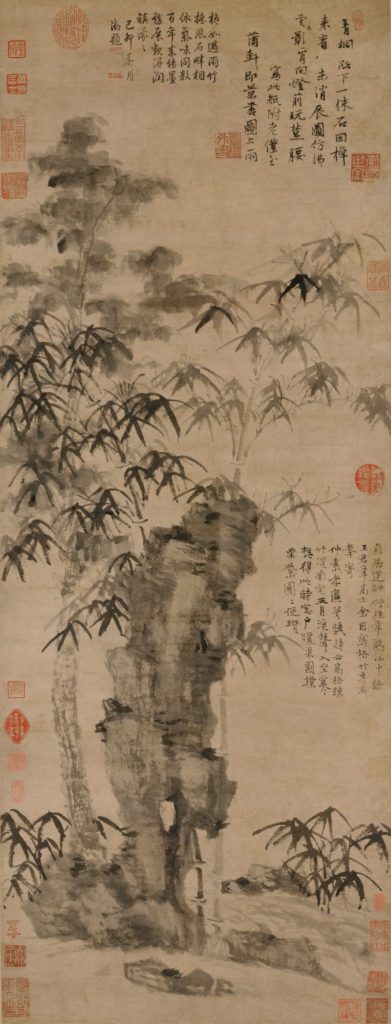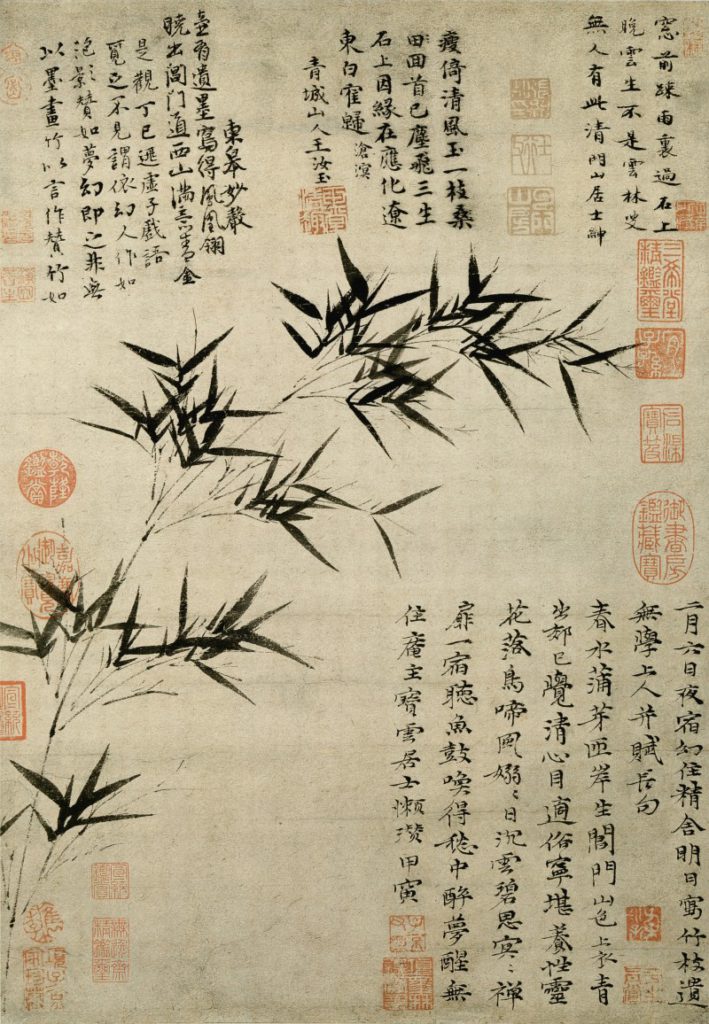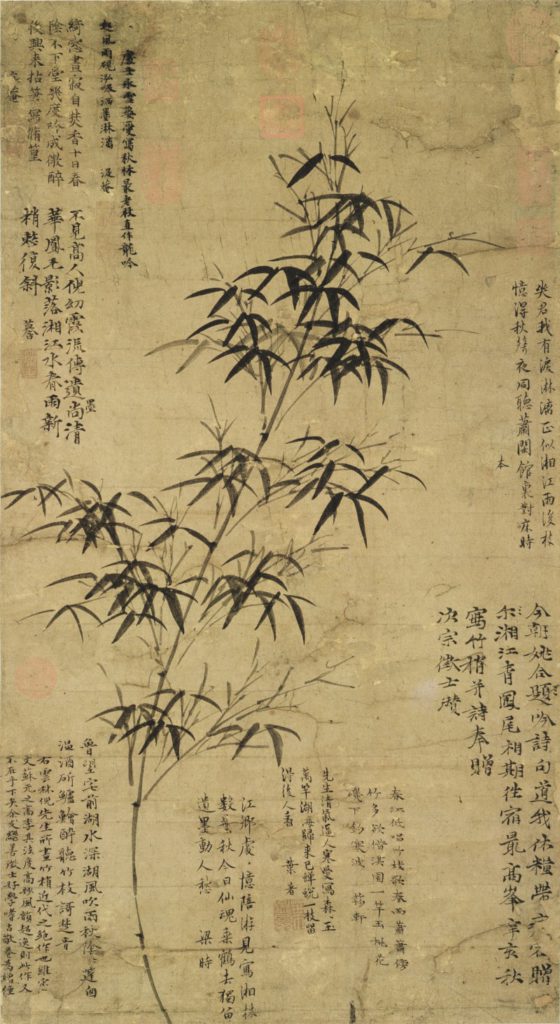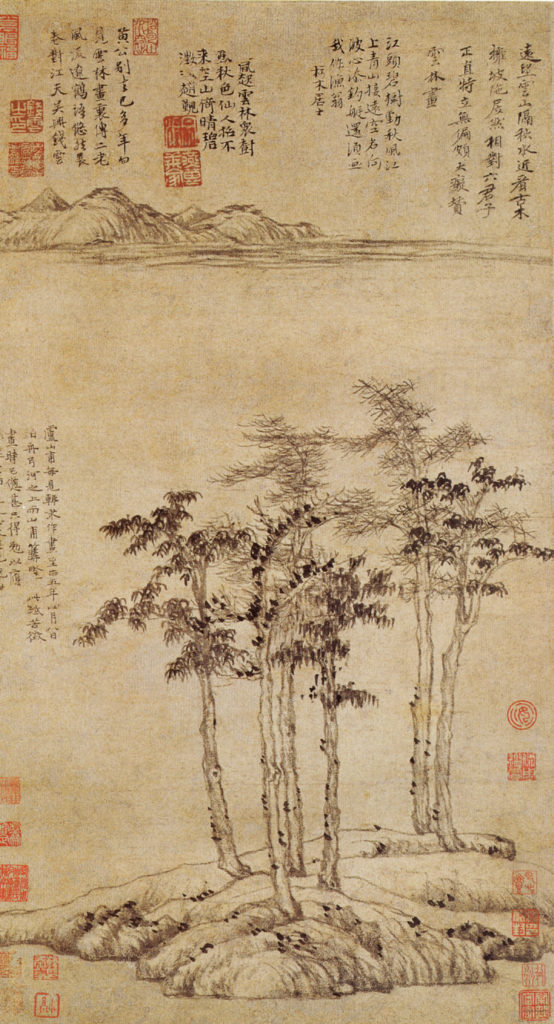Ni Zan (倪瓚, 1301~1374) was a scholar and painter during the Yuan and early Ming periods. Along with Huang Gongwang, Wu Zhen, and Wang Meng, he is considered to be one of the Four Masters of the Yuan Dynasty.
Ni Zan was born into a wealthy family in the Jiangsu province of China after the death of the Kublai Khan, the Mongol ruler who defeated the Song dynasty and established dominance over all the areas that had traditionally been considered China. The Yuan rulers did not trust many of the Confucian scholars and instead preferred to appoint Mongolians and Muslims to administrative positions. Because of his family’s wealth, he could afford to go to school and get a good education that was uncommon at that time. When his father passed away at a very young age, his older brother took his place as the man in the family, who greatly influenced Ni Zan.

Growing up his life was fairly easy, he would spend his days reciting poetry and painting while traveling and conversing with other artists. He was one of a number of wealthy scholars and poets who were part of a movement that radically altered traditional conceptions of Chinese painting. Their paintings depicted representations of natural settings that were highly localized, portraying personally valued vistas that reflected their individual feelings.
During the 1340s a number of droughts and floods caused a famine throughout Ni Zan’s region, which subsequently led to peasant revolts. These revolts peaked in 1350 due to the government’s use of forced labor to repair the dikes on the Yellow River. Throughout the 1340s, the Yuan rulers also imposed heavy taxes on the rich landowners of the region in order to cover the cost of the ongoing natural disasters. There are many divergent opinions concerning Ni Zan’s reaction to these taxes, and his ensuing actions are unclear. However, it has been established that he distributed all of his possessions to his friends and moved into a houseboat. He left on the eve of the millenarianist Red Turban Revolt and travelled throughout the relatively peaceful southeast while various revolutionary parties tore through his region of origin. It was at this time that Ni Zan developed his distinctive style.
Most of Ni Zan’s landscapes take very much the same form: tall trees in the foreground, lakes or meadows in the middle and mountains in the distance. There is often a rustic hut, without any further suggestion of human presence, a few trees and other scant indications of plant life, and elemental landforms with a somber quiet throughout. These sparse landscapes defy many traditional concepts of Chinese painting. Many of his works hardly represent the natural settings they were intended to depict. Indeed, Ni Zan consciously used his art as a medium of self-expression. He was also the first artist to provide a caption in the corner of the painting to connect the scenery to the actual message.
Ni Zan created many famous bamboo paintings too which conveyed a very tranquil ambiance; he strived to create not only the scenes he saw before him, but the emotions he felt from viewing those scenes. In 1364, he said “I use bamboo painting to write out the exhilaration in my breast, that is all. Why should I worry whether it shows likeness or not?”



During Ni Zan’s lifetime, his work was highly valued and it itself was enough to pay for the anything he would need during his travels. He returned to his hometown in 1371 after the Ming Dynasty came into power. He passed away in 1374, only three years after returning to his home.
Related Link:
Painting List of Ni Zhan ==>

